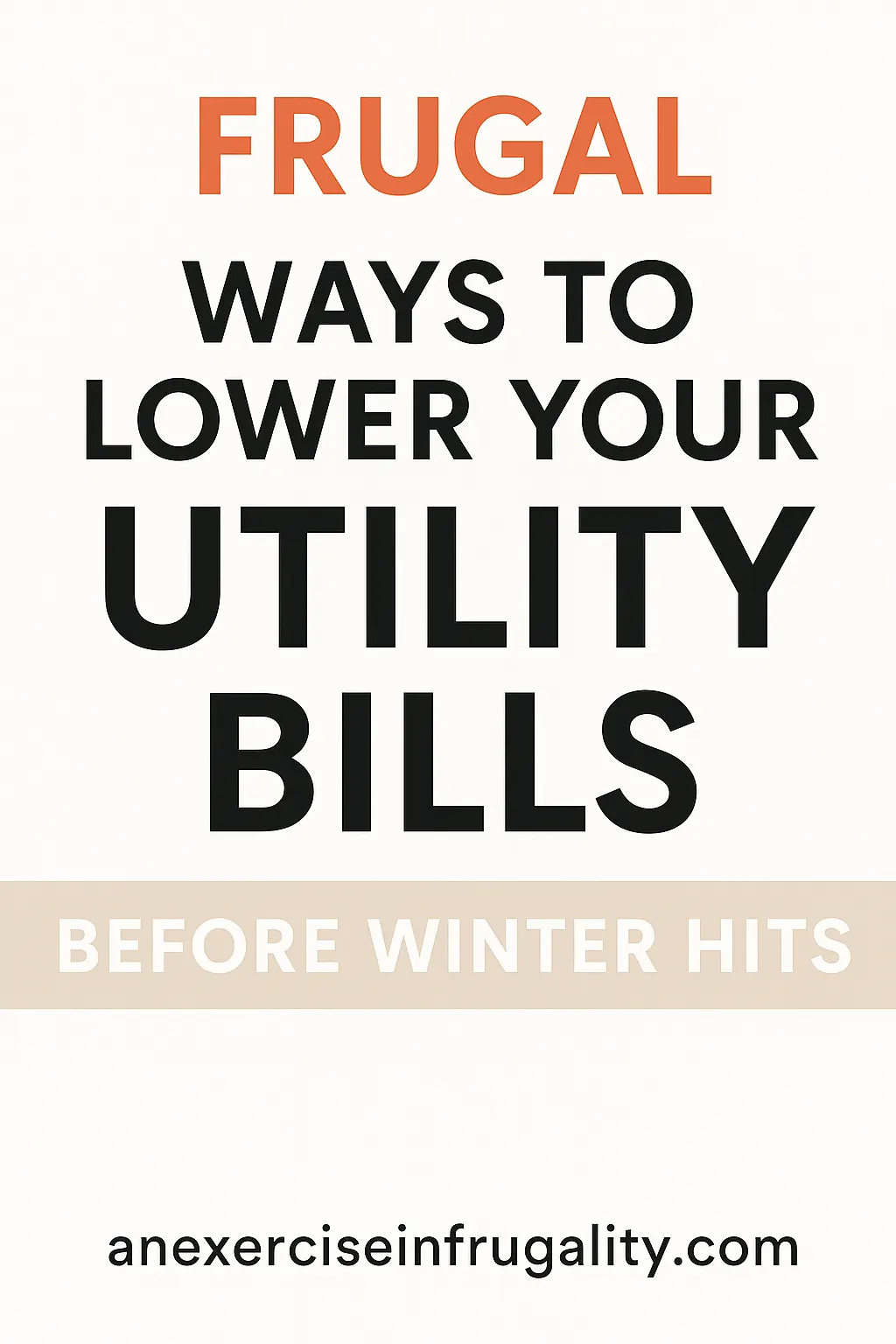
Every single year, the same thing happens: the first chilly night hits, I crank up the thermostat “just to take the edge off,” and suddenly my utility bill looks like I’m trying to single-handedly power the Vegas strip.
And every single year, I swear I’ll do better.
(I wish I could say it’s just during the winter, but frankly, my AC habits in the summer are no better.)
I’m not interested in freezing under seventeen layers of blankets or pretending I enjoy seeing my breath while I watch Netflix. But I am interested in keeping our home cozy without blowing half our budget on heat. So I’ve been digging into strategies, some we’ve already tried, some new to us, that actually make a difference. Real, practical things you can do now to make your winter energy bills less of a gut punch.
Stop Guessing Where Your Heat Is Going
If your heating bill feels out of control, start here. Heat escapes from way more places than you think—outlets, chimneys, even recessed lights.
We had an energy audit done (many utility companies do this for free or cheap), and I’ll be honest, it was humbling. They showed us exactly where we were basically paying to heat the outdoors. Spoiler: it was everywhere.
Until you know where your house is bleeding energy, you’re just guessing. And guessing is expensive.
Smart Thermostat Strategies That Actually Save Money
Heating costs rise fast when you’re cranking the thermostat at random. Instead, get strategic:
- Lowering your thermostat by just 1–2 degrees can save you up to 3% on your heating bill. It’s a small enough change not to notice too much of a difference. Drop it lower at night and when you’re out of the house for bonus savings.
- An inexpensive programmable thermostat can drop temps automatically while you’re asleep or away (bonus, this one comes with a $10 rebate!)
- If you qualify, your energy provider may even offer rebates for smart thermostats, which often pay for themselves in a single season, so you can stack your energy provider’s rebates with the ones from the thermostat manufacturer.
This isn’t about suffering, it’s about letting the thermostat do the thinking for you.
Zone Heating vs. Whole-Home Heating
Heating the entire house evenly doesn’t always make sense. If you spend 90% of your time in the living room, why pay to heat empty bedrooms?
We use a small infrared heater in the living room (or the fireplace!) and lower the main thermostat by a couple of degrees. It’s warm where we actually are, and we’re not wasting money keeping unused spaces comfortable. Heat rises anyway, but the bedrooms can be cooler for bedtime because we’ll snuggle up under blankets anyway.
Attack the Hidden Energy Wasters in Your Home
Not all high utility costs come from heating. Old appliances and water heaters can quietly drive up bills:
- Test your appliances. We discovered an old freezer in the garage was adding $25 a month to our electric bill.
- Insulate your water heater. A $15 insulating blanket can save $20–40 per year. Same goes for exposed hot water pipes.
- Look for phantom loads. Devices like cable boxes, game consoles, and even microwaves draw power 24/7 unless unplugged or placed on smart strips.
These aren’t glamorous fixes, but they’re the kind that put real dollars back in your pocket.
Frugal Comfort Hacks That Don’t Feel Like Sacrifice
I’m not about to sit in my own home bundled up like I’m camping. Instead, I lean on frugal comfort hacks:
- Dry laundry indoors to boost humidity and cut dryer costs.
- Bake in batches: one oven cycle for three meals, plus free heat in the kitchen.
- Keep doors closed to rooms you don’t use, trapping warmth where it matters.
- Utilize ceiling fans (set the appropriate way for the season) to keep the heat where you want it.
- Draft guards on all external doors, as well as bedroom doors.
- Invest in an inexpensive towel warmer and use it to warm your pajamas before hopping into bed. Feels luxurious, but also a sneaky way to cut down on the heat bill!
These are small tweaks, but they add up without making you feel deprived.
FAQs About Saving Money on Your Utility Bills
How much can you really save on heating bills?
Most households can realistically save 10–25% by combining draft-sealing, thermostat adjustments, and appliance upgrades.
Is it worth buying a smart thermostat?
Yes! Especially if your schedule varies. Between rebates and efficiency savings, many homeowners recoup the cost within the first year!
What’s the cheapest way to insulate windows in winter?
Plastic film insulation kits (around $15) are surprisingly effective, reducing heat loss through windows by up to 50%. Heavy curtains or fleece-lined drapes are another budget-friendly option.
Are space heaters cheaper than central heating?
Sometimes. If you’re only heating one or two rooms, a space heater (especially infrared) can be more cost-effective than running your furnace for the whole house.
The Bottom Line: Stack the Wins for Lower Bills
There’s no silver bullet for lowering utility bills. It’s about stacking five or ten small wins until you notice your bill shrinking instead of ballooning. Some fixes are free, some require a small upfront investment, but all of them compound!
And honestly? I’d rather put that money toward groceries, savings, or something fun than hand it over to the utility company.
This year, instead of dreading winter bills, tackle them head-on, with strategy, not suffering!

